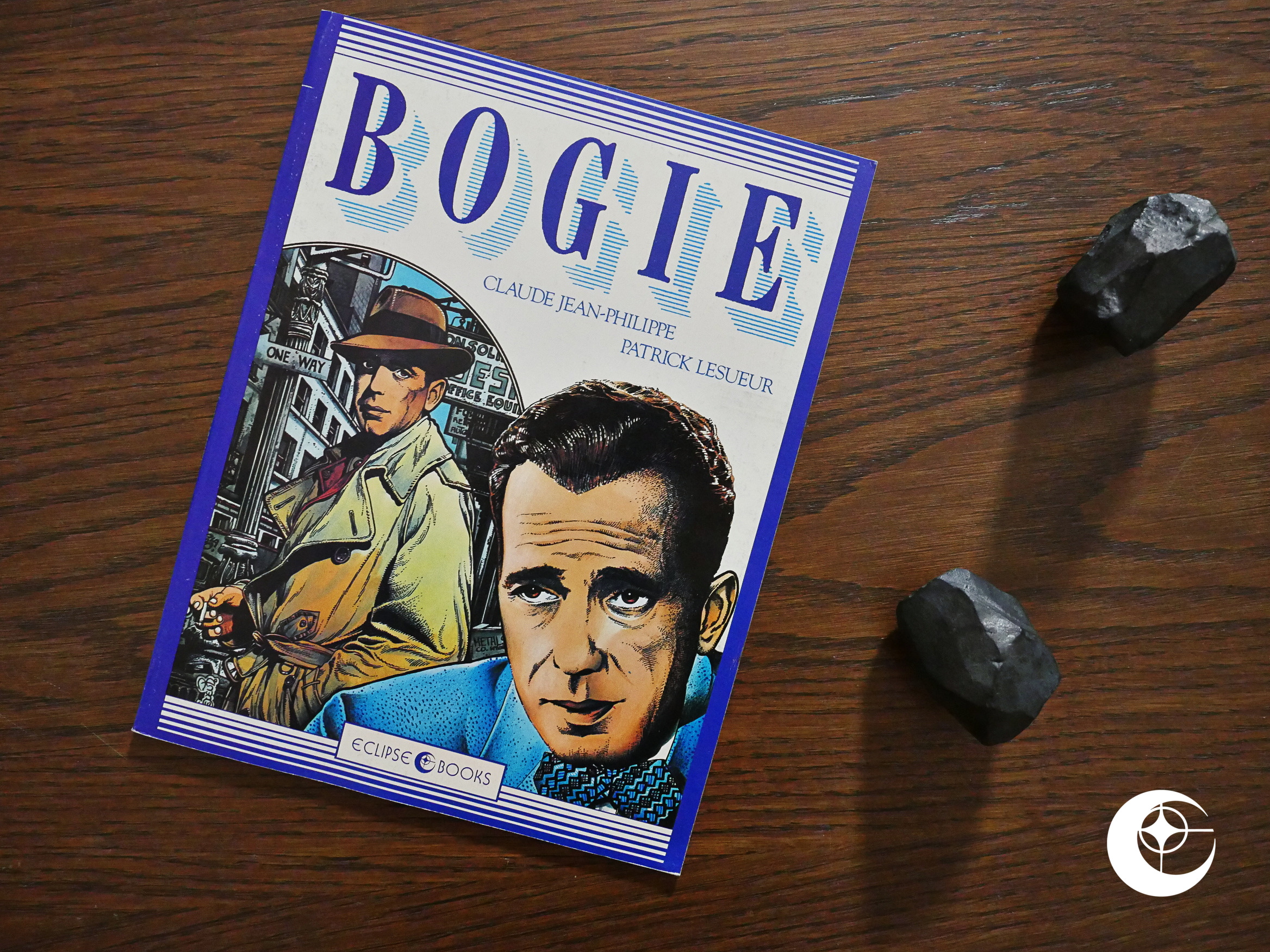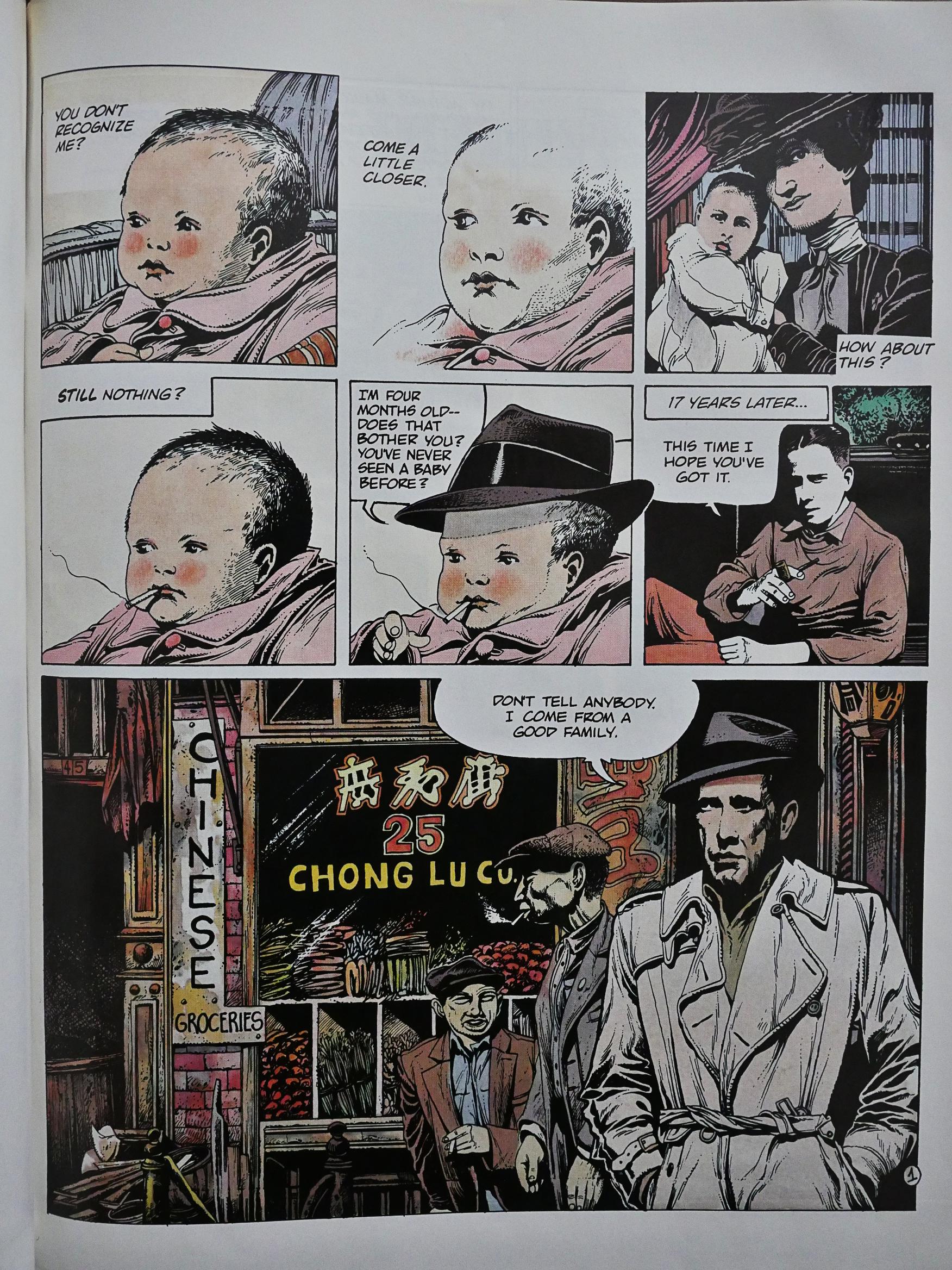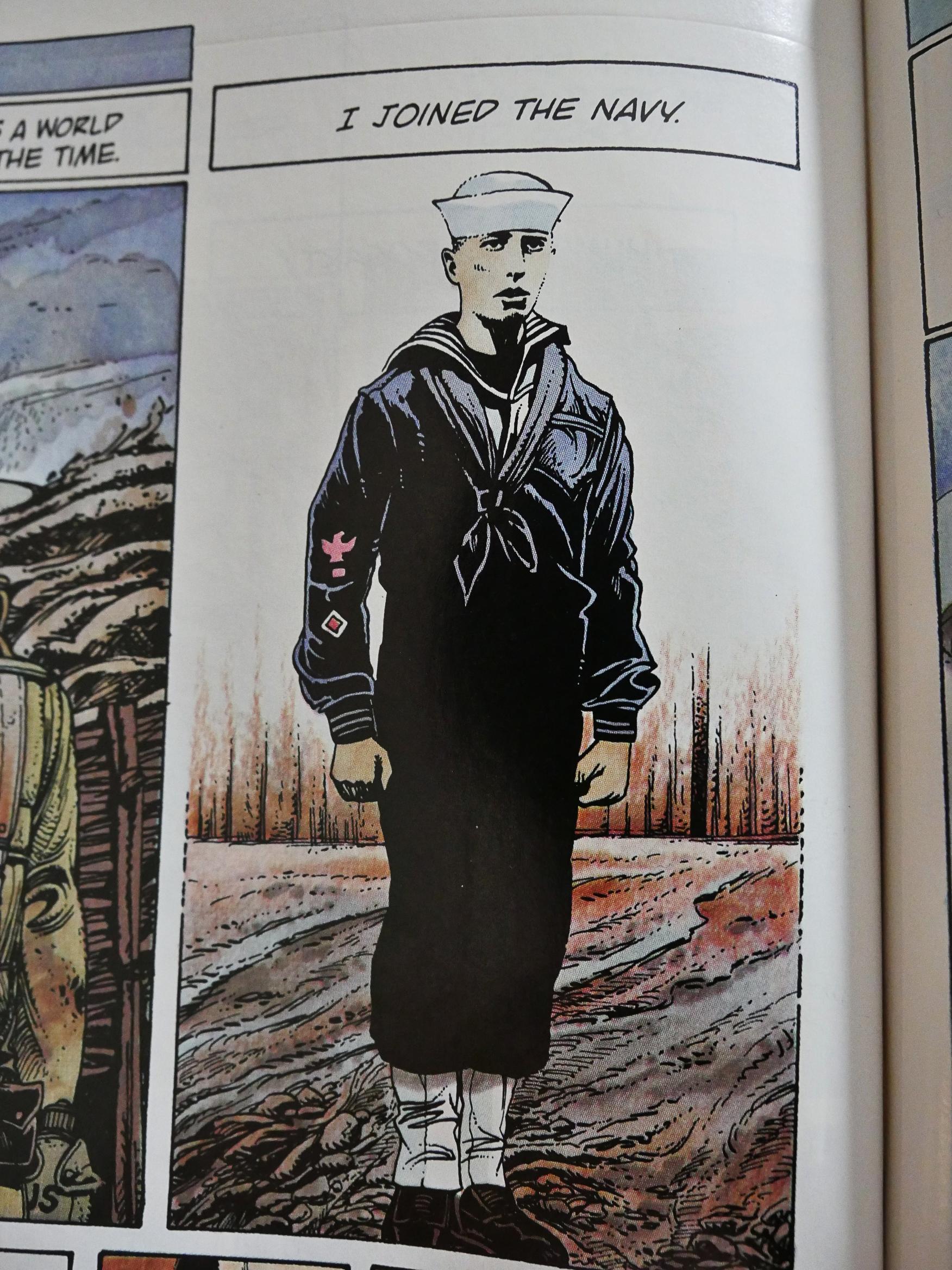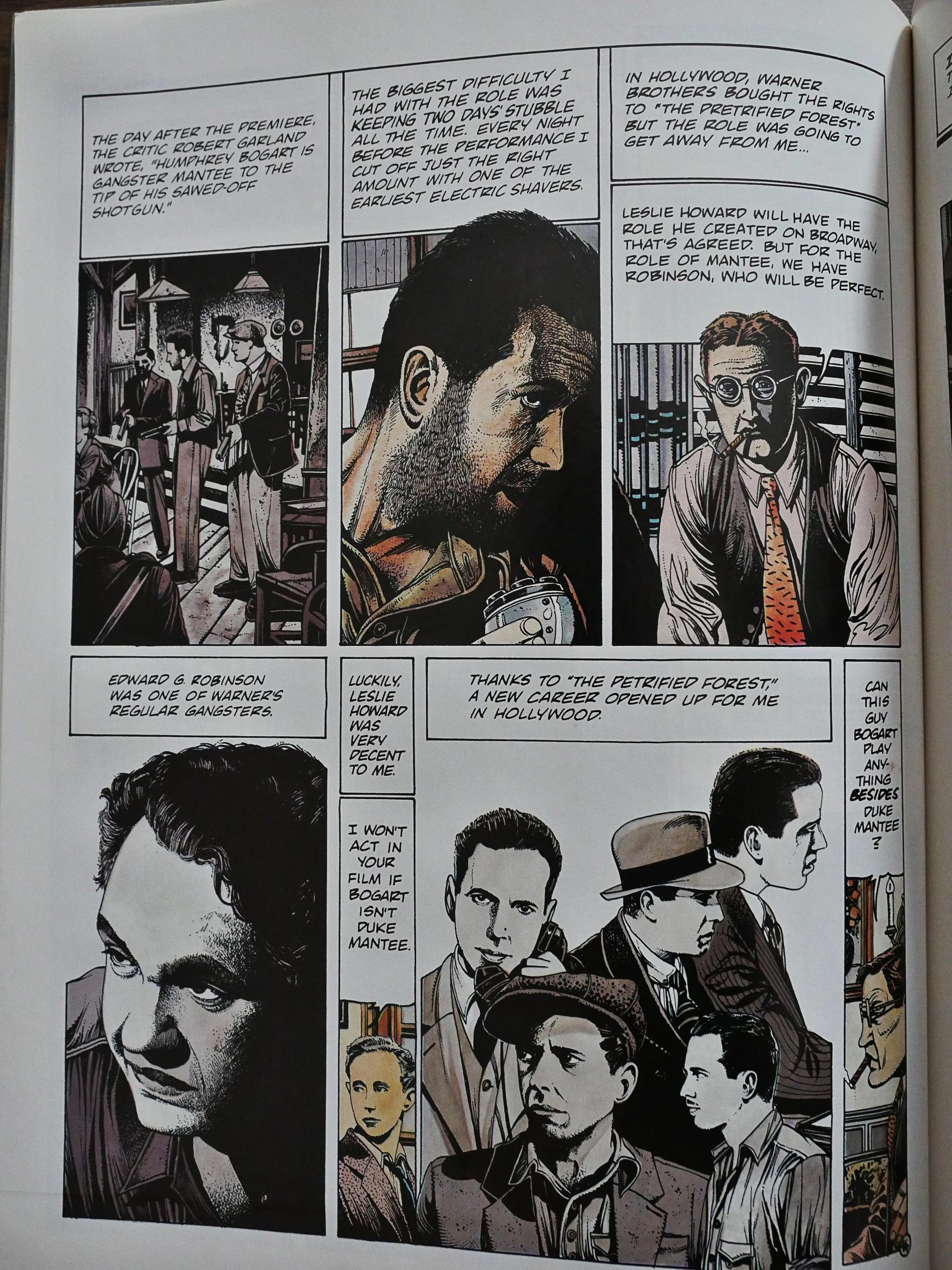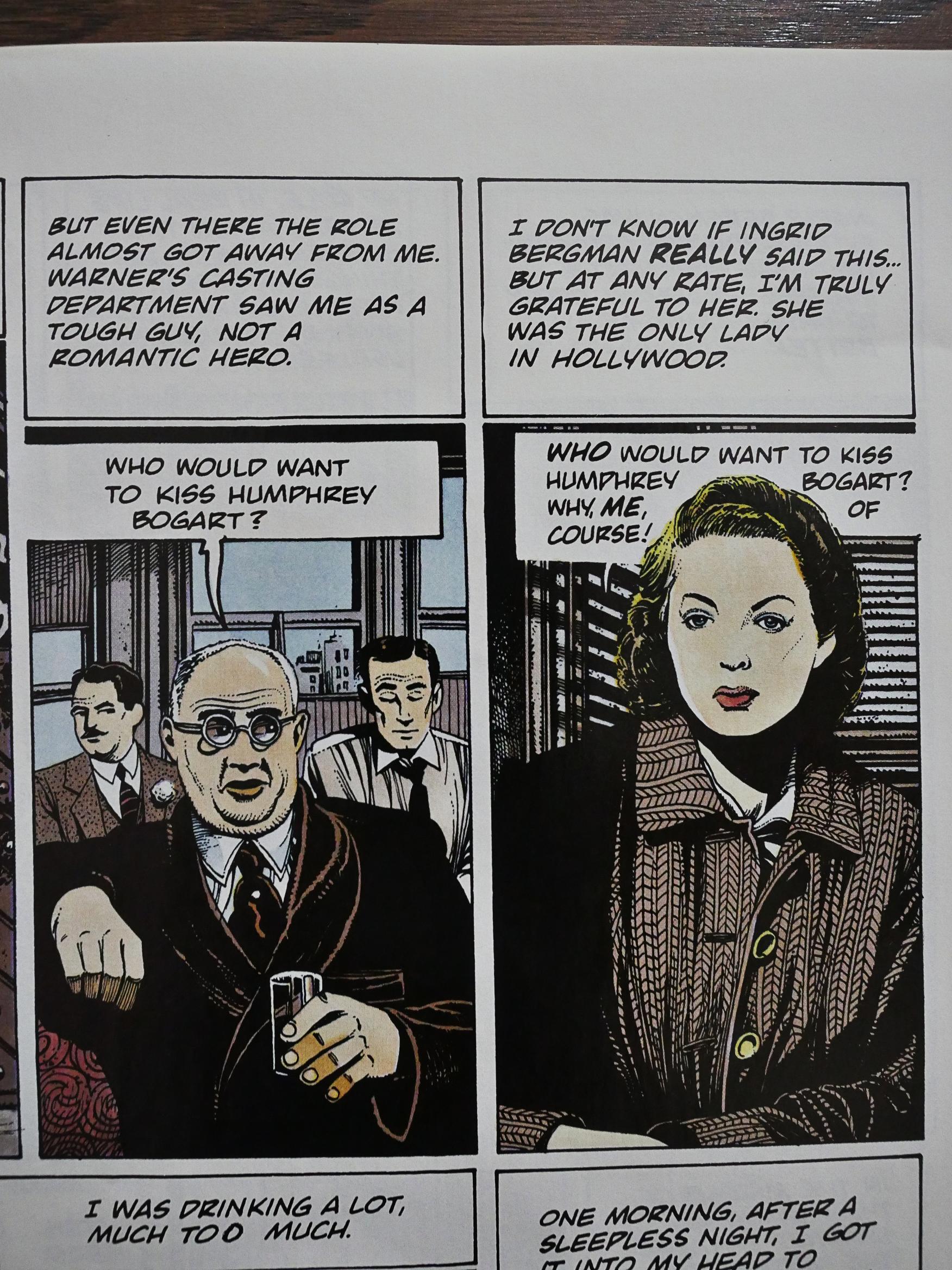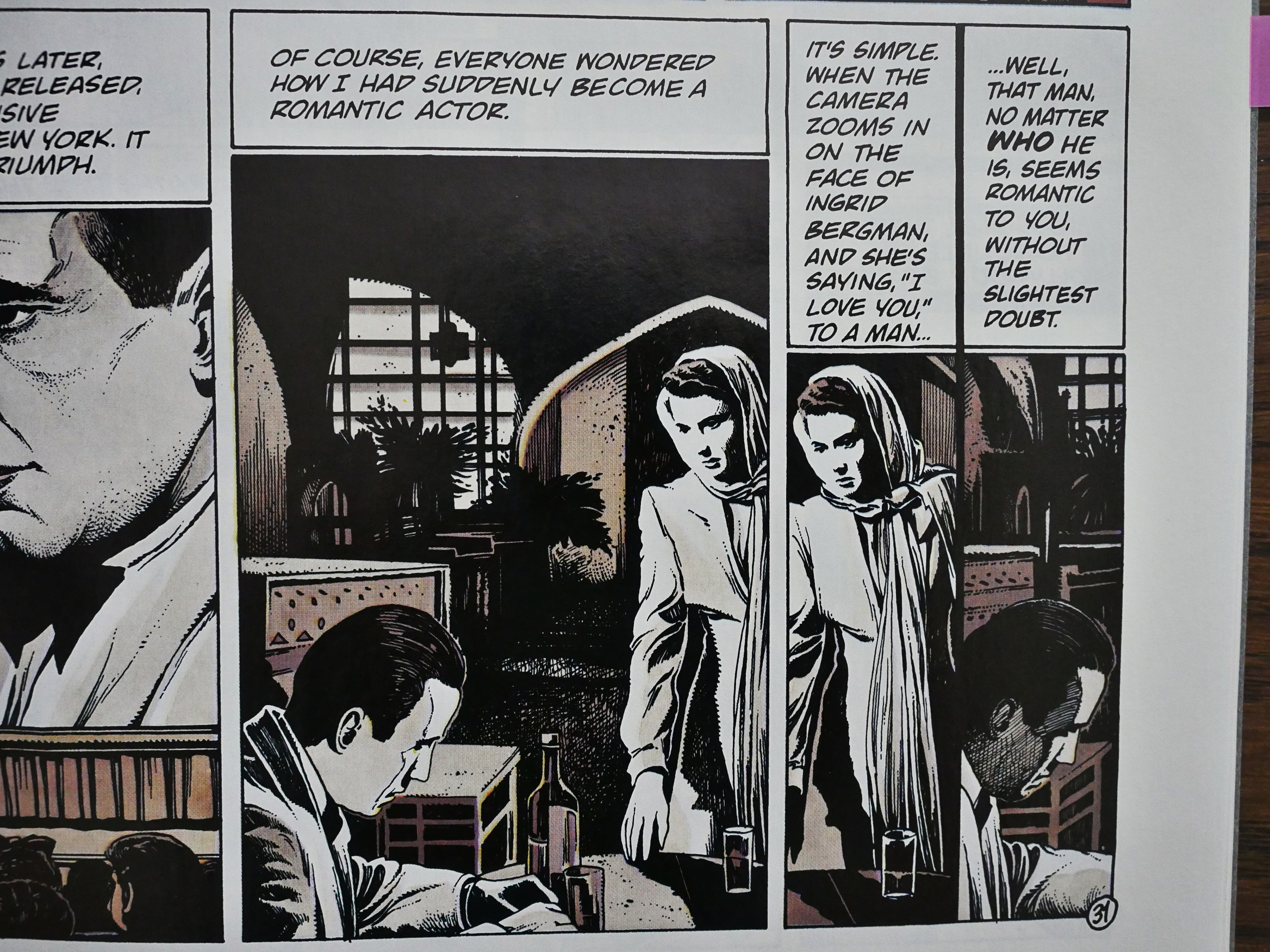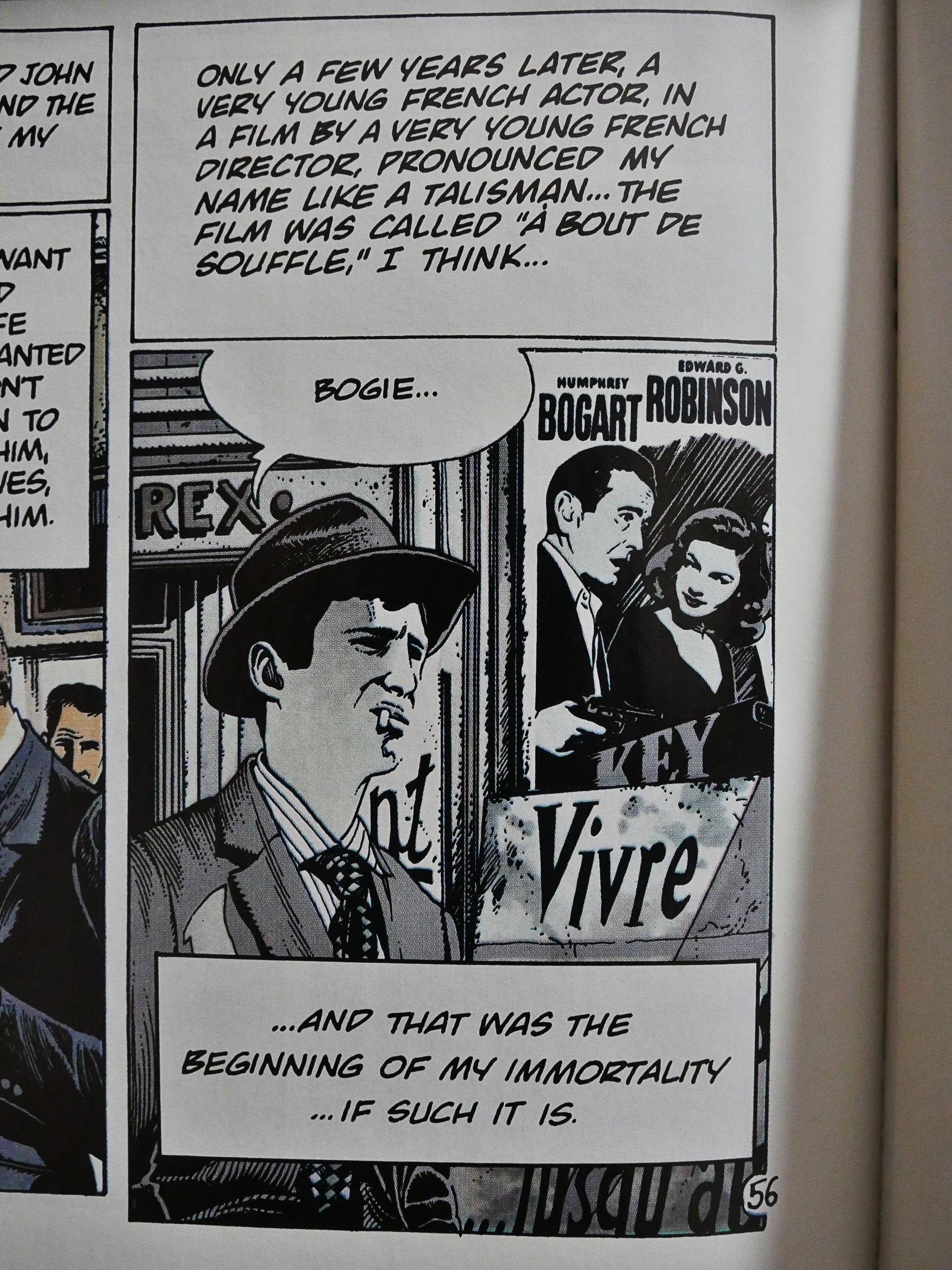Bogie (1989) by Claude-Jean Philippe and Patrick Lesueur.
Both of the creators are unknown to me, so I wondered what Eclipse had dredged up this time. This was originally published in France by Dargaud and is here printed as a squarebound album. On extremely shiny, white, thin paper, which is an unusual choice.
There’s no text pages to give a context to the work.
And the art style isn’t my favourite. It looks extremely photography based, so much so that some of the panels just look like blown-out photo copies.
The story of Bogart’s life is told mostly through narration.
The faces that aren’t obviously drawn from photo reference often look rather misshaped, like in the top right panel up there.
But… somehow, despite all my misgivings, I began to be pulled into the work. It establishes a rhythm early, and sticks with it to the very end. Perhaps it’s because I know nothing of Bogart’s story, but it’s just… interesting. It paints a very sympathetic picture of a fun, but laconic guy.
And the artist does do some interesting things beyond doing a lot of tracing, like here when he repeats bits of the preceding panel in two narrow panels. It’s an odd choice, but I feel that it totally works: The narration talks about Bergman, and she’s repeated, and then talks about who she’s talking about, and repeats Bogart.
It’s a calm rhythmic beat.
And at the end, we return to France, of course, because Jean-Luc Godard is who’s important. Right? Right.
It’s an odd little graphic novel, as this blog points out.
At only 56 pages it’s a slim number, but as someone with an interest in the cinema of Humphrey Bogart and the medium of comics, Bogie is the point at which those two graph lines meet. It’s a fun little number.
It’s never been reprinted in English again, and you can pick up used copies for $1-2 on the web. It was originally published in 1984 under the name Bogey, and the writer’s name is Claude-Jean Philippe, not “Claude Jean-Philippe” as Eclipse states on the cover.

